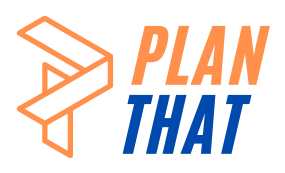Without effective communication, a project can’t move forward, leading to unnecessary delays that translate to financial losses. Thus, a big part of project management is keeping communication lines open from the initiation of a project to its closedown. However, this can be challenging to do because a project usually involves a diverse set of stakeholders who have varying perspectives.
The key here is to be an effective listener and communicator at the same time. It’s not enough that you talk to people — you also need to make sure that they understand the relayed information in the way that it is intended to be understood. That rule applies to you as well. When any of the stakeholders talk to you, make sure that you comprehend what they’re saying in the way that you are expected to. You can do this by asking questions and getting feedback, instead of just talking or listening without hearing the input of who you’re communicating with. After all, misunderstanding usually occurs when there are assumptions and no confirmations, especially when one thing can be interpreted in so many ways by different people.
When you’re handling a big project, you need to have a project communication plan. This plan will help you transmit information to the right stakeholders in a timely manner, which is the very essence of project management. Take note that effective communication is not the same thing as over-communication. For example, what’s important to the team working on the project may not be relevant to the clients, and vice versa. As a project manager, you should know how to filter information; otherwise, you’ll overwhelm people with too many details which can make them lose sight of what’s necessary.
To create a project communication plan, you’ll need to identify all the tasks that need to be done, the timeframes in which these are expected to be completed, and the people who’ll own these tasks. Take note that in a project, you don’t just assign tasks to the team — you give them ownership of their duties to instill in them a bigger sense of responsibility and accountability.
You’ll also need to identify the stakeholders according to their involvement in the project. Those who have the biggest influence should be at the top of your communications list. When changes occur, you can use this list as a guide so that you won’t forget anyone.
Next, use the plan to define the means with which you’re going to communicate with the stakeholders. What kind of communication strategy will you incorporate in your project management? Whether you’re going to use emails, social networks or Web conferences, everyone else should be aware of when and how information will be relayed to them. And of course, they should also know how to reach you if they need anything relayed to you.
From all these details, you can create a communication matrix that identifies who needs access to what kind of information, and when and how they will be informed. Then, determine how you’ll keep track of all exchanges. In a big project involving many people, this level of documentation, albeit tedious, is necessary.
But of course, a project is bound to fail from the start if a team operates under wrong instructions. Thus, a good project communication plan should have a solid foundation on your clear understanding of what clients want. Once you have that in place, it’s just a matter of you acting as a liaison between all the stakeholders.
If this sounds too much for you to handle, take heart. Effective communication in project management takes a lot of practice. It’s a skill you develop as you take on more projects.
